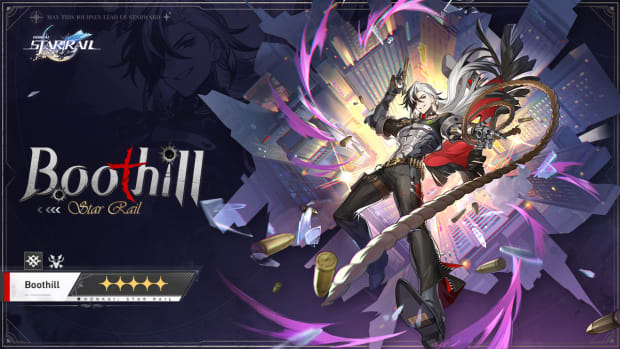SpellForce: Conquest of Eo review
It’s hard work being a mage. You have to collect a lot of materials and ingredients for your craft, and often the previous owners of these resources don’t want to part with them – especially if the material in question is their soul. See, I’m a necromancer. Souls are the base for my wonderful creations, my beautiful babies with sharp teeth and gruesome claws, who do my bidding without protesting.
There are people in this world who call my projects unnatural and dangerous. That’s just jealousy talking. Let them send their minions and their lickspittles to stop me – their souls will make a fine addition to my own forces. Soon, very soon my grand tower shall take off yet again and the final battle will begin. Then the morality of magic will be mine to decide. Muahahaha.
Welcome to SpellForce: Conquest of Eo, a turn-based strategy game set in the lore-rich world of SpellForce, a franchise known for its blend of role-playing and real-time strategy. Developed by Owned by Gravity and published by THQ Nordic, Conquest of Eo combines the deep history of the setting – those who have played previous games in the series will find themselves awash in references and familiar names – with gameplay that’s best described as Heroes of Might and Magic meets Civilization.
You’re a mage following in the footsteps of your murdered master, inheriting his tower and his ambitions. On the overworld map you collect resources, explore the lands, accept quests, train units, and move your armies around. There are several different world maps to choose from, each representing a different difficulty and containing various challenges. However, the main story is the same in every game – you inherit the tower and investigate what your master has been up to. You can freely combine several different victory conditions to initiate the final battle of the campaign, so you can approach every run a little differently.
Your tower is your main base of operations and can be expanded with different rooms, which grant you bonuses such as more gold income or research points, but also give you the ability to recruit new types of units or craft better items. In Conquest of Eo, you are basically a magically gifted locust: Your tower claims a domain around itself and sucks this land dry of resources until there is nothing left. You can then cast a spell to lift your tower into the air and have it land at a new spot on the map to get even more resources. Actually, forgest locusts – we humans do that too. Your apprentices – hero characters leading your troops – can also build lodges to do the same, while some units have the ability to harvest or mine resource-rich locations on the map. I told you: being a mage is hard work.
But all that toil is rewarding, for the resources gained this way are used in your workshop – and what you do in your workshop depends on the class you choose. If you’re a necromancer, you can use souls and infuse them with other materials to create undead units. Better souls allow you to raise stronger undead, so it’s always good to be on the lookout for, uh, especially potent candidates. Depending on the mix of materials you use to create your undead, they’ll become various unit types and have different stats and abilities, which is cool – it rewards experimentation and curiosity, which is a great representation of what your mage alter ego is doing in the world.

Experimentation is rewarded when creating new types of undead out of different materials.
Owned by Gravity / THQ Nordic
The other two classes in the game can brew mighty concoctions for use in battle or forge powerful glyphs to permanently enhance the abilities of units. All three crafting activities need a steady supply of resources. These three systems are an interesting way of differentiating the classes and their campaigns, and all three are great in their own way. I had an especially good time playing as the artificer, who can forge glyphs by crafting spider glyphs and enhancing my units with them. These items give units a passive ability that roots enemies when they attack them, which is perfect for pinning them down and minimizing your own losses.
As a mage, you also have access to a grimoire full of magic knowledge and spells. Research the spells and you can cast them on the overworld map by investing mana. There are several domains to choose from, such as the Death domain for the necromancer – you can do fun stuff like liberating a town’s inhabitants from their worldly shackles and woes and collecting their souls for further use. Yeah, my necromancer run turned pretty evil, looking back at it. The towns did not like me reaping the souls of their populations very much. But that’s the thing: Conquest of Eo gives you a choice on how you want to play. There are hundreds of quests on the map that can show up randomly and it’s completely up to you on how you engage with them, which opens up a lot of great role-playing opportunities. You might be a mage with your own agenda, but the peoples, cities, and factions in the world you live in have their own stuff going on – it may seem mundane to you, but getting involved offers great rewards. Or, y’know, reap away.
Combat is also turn-based and anyone who’s played titles like Age of Wonders will be familiar with how things work: If one of your armies clashes with another army, a separate battle map is loaded where your units face off, using an action points-based system. The combat can be pretty challenging if you make a wrong move, but the AI is not overly smart and can easily be cheesed – such as by using the rooting technique I mentioned earlier. The unit variety is fine overall, as you can recruit troops from many different peoples and factions. Leveling your units gives them additional abilities and stats, which further differentiates them.
With stacks not containing a lot of units (between four and eight), battles are generally over pretty quickly. There is a cover and terrain system that grants various bonuses, but due to the small scale of combat and its speed, the battles feel a bit rushed. There is also no way of reinforcing a stack with another army, which is a bit disappointing. There is enough depth here for genre beginners, but veterans may hit the bottom of the pool a bit too quickly to keep them interested.
While the graphics and animations are fine overall (more so on the overworld map than in the battles), the sound design is a bit all over the place – sound effects for marching units and the like feel out of place and simply not fitting sometimes. Visual lags also seem to be a problem when area-of-effect abilities are used in combat. Otherwise, though, Conquest of Eo has been a very smooth experience during the review process, with loading times being incredibly quick.
Conquest of Eo’s greatest strength is the narrative it spins on the overworld map through letting you interact freely with it, and luckily combat can be auto-resolved. The game gives you a pretty accurate estimation of your losses in that case, which is very useful – but you can turn even complete defeats as projected by the auto-resolve into wins by playing manually quite often, so that’s definitely not the optimal way to fight. It’s really not great to lose a unit that leveled up multiple times and gained some great stats on the way to a random peasant you met on the road, so better be safe.

I'll say it: The true treasure to be found in Conquest of Eo is the friends and stories collected on the way.
Owned by Gravity / THQ Nordic
All of that makes SpellForce: Conquest of Eo a good gateway into this genre for beginners, while veterans, who may feel the experience to be a bit shallow mechanically, will still be able to enjoy hours of role-playing and player-generated narrative with a tiny dose of just-one-more-turn-fever.
A competent, if not groundbreaking change of pace for the SpellForce series that is a good foundation for future additions.
Score: 6/10
Version tested: PC.





